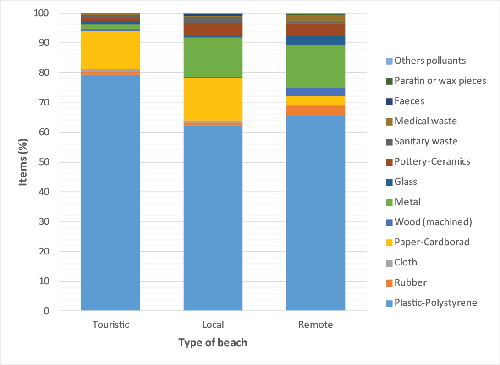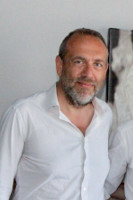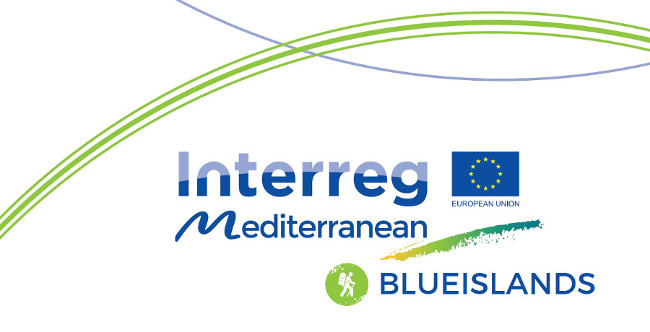News
BLUEISLANDS Project | Newsletter 1
Table to content
- Monitoring plastic pollution in MED Islands
- Mitigating wastewater impact
- Marine litter management in the Mediterranean: the Maltese case
- Hotel Rifiuti Zero
- Reuse of gypsum and leftover fish processing in Réunion island
Monitoring plastic pollution in MED Islands
The Institute of Environmental Science and Technology (ICTA) is a interdisciplinary research centre of the Autonomous University of Barcelona (UAB). It promotes academic research and postgraduate education in the environmental sciences. It aims to improve our understanding of global environmental change, and the nature and causes of environmental problems. In addition, it studies policies, strategies and technologies to foster a transition to a sustainable economy. One of the research line of the ICTA focuses on the characterization and impact of plastic pollution in the marine environment.
Plastic pollution is threatening the oceans, marine animals and even human health. When it is dropped on land, plastic often ends up in the marine system where it disintegrates into small pieces (microplastics; <5mm down to few nanometers) that can easily be integrated to the food web. Beaches represent one of the main gate for plastic to enter the ocean, associated to the current system of mass tourism over the last few decades, this represents a threat, especially in islands, for the environment as well as an economical challenge for local municipalities who have to face this seasonal increase of waste.
The main role of ICTA-UAB within the BLUEISLANDS project is to assess the dynamics of marine litter, with a special attention paid to micro- and macroplastics, in highly touristic coastal areas of the following islands of the Mediterranean Sea: Mallorca, Sardinia, Sicily, Malta, Rab, Crete, Mykonos, Rhodes and Cyprus. A survey protocol was specifically designed to periodically monitor the amount and type of marine litter found on three selected beaches of each of the nine islands, as well as in the surface waters running the length of these beaches and the underlying marine sediment. The beaches were selected in order to encompass different case-scenario including highly touristic beaches, remote beaches (likely less impacted) and beaches mainly used by locals. These surveys will be conducted during both the high and low touristic seasons in order to assess the impact of tourism on the generation of waste (including both the micro- and macroplastics) on these beaches.
A first set of surveys on the marine litter was conducted in March on 8 of the 9 islands. The preliminary results show that on average the plastic debris largely dominate the composition of the marine litter no matter the type of beach considered. The more touristic sites present the highest proportion of plastic items (±80% of the items collected) followed by the remote sites (±66%) and the beaches predominantly used by locals (±62%). The next more important types of waste are the papers and cardboards (±10% of the items collected) and the metal (±9%). Concerning the "visible" microplastics collected during this first set of surveys on the marine litter, both primary (manufactured) and secondary (breakdown of larger plastic debris) microplastics are found on almost all the investigated beaches. Since the first sampling was done in a low touristic season, these first results do not allow to draw any conclusion concerning the impact of tourism on the waste generated on the selected beaches. However, these data will provide the baseline for comparison with the data collected during summer and they show that all studied islands are already contaminated by plastic pollution.

Caption: Results of the marine litter surveys conducted in March 2017. The percentages of the different types of marine litter collected (right panel) were averaged for all the islands and presented according to the different type of beaches investigated.

Caption: Picture of the "visible" microplastics collected in March 2017 on Arina beach (Crete). The upper part shows the secondary microplastics while the lower part shows the primary microplastics (here, virgin resin pellets used in plastic manufacturing processes). The 1€ coin gives the scale.

Wastewater treatment plants are often undersized to deal with the increase in wastewater during the high season tourist peak. The effect is the alteration of ecosystems and of seawater quality with negative repercussions on tourism itself.
BLUEISLANDS is developing a monitoring system to investigate the quality of coastal seawater through short-term macroalgae deployments. The experiments will be carried out in three areas before, during and at the end of the touristic season.
Data collected from the experiments will be needed in further project phases to draw:
- Maps indicating the occurrence and the extent of plumes of nutrient and organic matter of anthropogenic origin
- Warning system of seawater quality in coastal touristic destinations
- Alert for competent authorities highlighting the eventual need for improved standards for sewage discharge, coastal use
- Indications on the necessity to minimize and mitigate impact of tourism on marine ecosystems.
The first sampling campaign carried out within the BLUEISLANDS project, to assess the tourist impact on coastal areas, took place in Cyprus at the beginning of June, at the touristic site of Paralimni and in the control site of Cavo Greco.
Research activities, coordinated by CoNISMa (National Inter-University Consortium for Marine Sciences, Italy) were carried out with the precious support of the Ministry of Agricultural, Rural Development and Environment of Cyprus, and the all the people involved from the Department of Fisheries and Marine Research, the Department of Environment and InteliConS.
Marine litter management in the Mediterranean: The Maltese case
The Mediterranean Sea is an enclosed sea with only one opening for water exchange and occupies some 2.5 million km2. The north western shores of the sea are heavily populated and highly urbanised. The southern coast is sparsely populated but population is ever increasing. Coastal tourism is very important accounting to about one third of global tourism. Maritime traffic in the Mediterranean Sea is amongst the world’s busiest. The physical and demographic conditions of the Mediterranean Sea make it a trap for marine- and land-derived litter. Urbanisation and increased industrial activity are the major contributors of marine litter in the Mediterranean Sea. The impacts of marine litter in the Mediterranean Sea are substantial when considering its enclosed nature, endangered flora and fauna and the importance of the tourism industry in the area which doubles during the summer period.
The Maltese Islands are situated at the centre of the Mediterranean Sea. The Maltese territorial waters extend to 9.65km from the coast, comprehending an area of about 3,000 km2. Limited investigations were so far carried out on benthic (sea bottom) marine litter in the Maltese Islands. The beach surveys which are being carried out as part of the BLUEISLANDS project are expected to provide a better picture of the marine litter situation in the Maltese islands. This will also provide an insight on the impacts of tourism on the local scenario.
As part of its corporate social responsibility, Wasteserv recently coordinated two beach clean-ups. The areas leading to these beaches were also incorporated in these clean-ups. Common waste streams noted during these clean-ups were glass, wood, metals and plastics.
After recovering marine litter, treatment becomes the next issue. Recycling of marine litter might not be technically and economically viable due to various reasons. For instance plastics need to be meticulously sorted into same plastic types for recycling to be possible. This is hard to achieve since plastics found in marine litter would be difficult to identify, and also because not all plastics are recyclable. Plastic needs to be cleaned from foreign objects such as sand, dirt and marine organisms to be prepared for recycling. Moreover, decomposition from marine exposure and ultraviolet radiation may degrade the quality of the plastics making it unsuitable for recycling. Thermal treatment of plastic marine litter might not be possible due to the high moisture and salt content which might damage the furnace. Also, some plastics may emit harmful chemical substances when incinerated and the further treatment of ash would be necessary. Currently the waste collected from marine clean-ups is either exported or landfilled as other treatment in Malta is limited.
This information was presented during an Environmental attaché meeting as part of Malta’s EU presidency on the 27th April 2017 in Valletta. Around 100 EU delegates were informed on Maltese Marine litter issues and the Blue Islands project. From the feedback received the delegates were highly interested in this matter.
References:
‘Marine litter from circalittoral and deeper bottoms off the Maltese Islands (Central Mediterranean)’, Mifsud, Dimech, Schembri, Mediterranean Marine Science, 2013
‘Recycling Plastic Marine Litter’, Northwest Pacific Action Plan, UNEP Regional Seas, October 2007
Waste management is an ever increasing aspect of tourism and still, very often, key actors in the tourism industry are faced with barriers to reducing waste. Those barriers are mainly due to a lack of information, time constraints, space and finance. Furthermore, waste management is still generally perceived as an additional burden, instead of a potential income generating resource.
Promoting waste reduction in hotels is an even harder job. Every hotel is an autonomous reality, dealing with different customers, green certificates, kind of services offered and quality standards. Waste reduction plans in hotels require a hotel culture shift, involving suppliers, guests and staff.
To understand more about waste reduction processes in hotels, BLUEISLANDS got in touch with Antonino Esposito, creator of Hotel Rifiuti Zero®, a project that is bringing a network of hotels situated in Sorrento, a famous Italian tourist destination, towards a zero waste strategy. Antonino agreed to answer to some of our questions.
Which are the main challenges you faced to introduce Zero Waste principles to hotels?
Hotel Rifiuti Zero aims to combine environmental sustainability with significant economic benefits. Hotels managers are widely sensitive to sustainability issues, but they have to deal with the cost of each action taken. The main challenge for introducing Hotel Rifiuti Zero in every hotel-client was to demonstrate that sustainable resource management goals are linked with:
- A more efficient management of the structure
- A real and solid environmental sustainability (which, Antonino whispers, sometimes is missing in certain eco-labels..)
- Substantial savings consisting in waste-tax discounts, lower consumption, less hours spent by hotel staff to collect waste
How do hotels in Hotel Rifiuti Zero network benefit from efforts in waste reduction?
 Each hotel manager believes to be the owner of the best possible management system. They are generally highly surprised when we give them our feedback on their waste management processes.
Each hotel manager believes to be the owner of the best possible management system. They are generally highly surprised when we give them our feedback on their waste management processes.
Magic happens when we analyze in each structure the production and disposal of waste, water and energy consumption, the level of waste taxes, the workers’ modus operandi. Hotel managers realize how big those management improvement areas are, and therefore are encouraged to take the first steps in a Zero Waste direction.
Each structure has its own peculiar processes: therefore, every one of the solutions we propose its highly customized. The Hotel Rifiuti Zero team has the expertise and experience to identify these criticalities and to provide the necessary corrective measures. That's what we do!
Hotels benefits are real and tangible: improved quality of employees work, customers appreciate accommodation facilities which are concerned about their environmental footprint, savings on supplies and on waste taxes. The efforts required to apply a Hotel Rifiuti Zero strategy cost roughly the 30% of the overall savings.
Which are the main results oh Hotel Rifiuti Zero? How are tourists and local public administration perceiving your work?
First step our hotels are called to is a real waste hunt: all unnecessary packaging are identified, all single dose packs or mono use supplies of soaps and food are eliminated, and flow reducers are placed on every tap. Medium and long term investments are aimed to reduce energy consumption, with the replacement of less efficient components.
Staff training is a core part of Hotel Rifiuti Zero: they have to deal with new waste collection processes, and even more important, they have to inform customers about the new procedures. To help hotel staff onthese new duties, we provide them with panels containing relevant informations on strategic zero waste features in the facility. We tend to put a C beside the 4Rs of the Zero Waste philosophy (Recycle-Redesign-Reduce-Reuse), and that C stands for Communication!
Customers appreciate hotels that adopt good environmental practices. Their appreciation is proven by their active and enthusiastic participation: hotels applying Hotel Rifiuti Zero have recorded an increase of around 15% of attendance (and hence an increase in sales!). On the other hand, we noticed a significant increase in customer's positive reviews on social networks. Thus meaning, that environmental care is perceived by tourists as a quality feature.
Local administrations are demonstrating to appreciate this kind of initiative by giving strong discounts on waste tax. Local authorities are well aware that a better “green” reputation and lower waste management costs are benefits for the whole community. That’s what we work for: waste is no longer a problem, but an opportunity!
Reuse of gypsum and leftover fish processing in Réunion island
Ea eco-enterprises, partner in BLUEISLANDS project, is a French regional cluster which objective is to foster emerging innovative solutions to measure, prevent, minimize or compensate the impacts of human activities on the environment. Ea eco-enterprises represents more than 140 members, gathering a large set of complementary skills: research centers, consulting companies, analysis laboratories, operators and utility providers. A significant part of SMEs Ea members are engaged in providing solutions for waste management. Tania Trochon from 2T Solutions Durables is one of them. She was engaged as sustainable development expert in many projects aiming at waste recovery system development.
She provides here some examples of running or past experiences:
Reuse of leftover fish processing
There is a waste common to all islands: leftover fish processing. Usually considered as a source of pollution and a health-related question, it can be transformed to a good fertilizer for local agriculture as it is done in Pacific islands, for instance on Réunion island. Similarly, organic matter from farming, food processing activities or waste water treatment can be transformed for agriculture.
Reuse of gypsum on Reunion island
The next example concern a building material widely used, the set gypsum. In Réunion island, a recycling unit has recently been created and then allows to reuse gypsum in local cement manufacturing. For more information: www.mecaroanne.com
All these solutions needed a significant time for research and testing, and huge efforts to develop local waste solutions instead of external solutions, but produced added-value both for the environment and the local development.
To learn more:
- Tania Trochon – 2T Solutions Durables – taina.trochon@gmail.com
- Anne-Gaëlle – Ea eco-enterprises / European project officer – anne-gaelle.jay@ea-ecoentreprises.com










